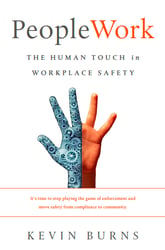7 Essential Parts Of Safety Leadership
Asking which traits make a good safety leader is like asking which auto parts make the best car.
 A question was posed by a safety person asking what are the traits that make up safety leaders? Asking which traits make a good safety leader is like asking which auto parts make the best car. Is it parts that make a customer choose BMW over a Mercedes or a Dodge Ram over a Chevy Silverado? Nope. Not parts. It’s the whole package.
A question was posed by a safety person asking what are the traits that make up safety leaders? Asking which traits make a good safety leader is like asking which auto parts make the best car. Is it parts that make a customer choose BMW over a Mercedes or a Dodge Ram over a Chevy Silverado? Nope. Not parts. It’s the whole package.
A car is tangible. You can see it, touch it, smell it, hear it and drive it. It is a thing you control when you are behind the wheel. Leadership, of the safety variety, is much the same except you can’t see it, touch it, smell it or hear it. But you can drive it.
Having a collection of car parts on your front lawn is useless. Having those parts assembled by a skilled technician is what makes it a car. Leadership traits mean nothing unless assembled by a skilled technician. Then, the collection of parts must be driven by a proficient driver.
Leadership is not a position. It is an attitude. Management is the position. One has nothing to do with the other. Safety too is an attitude. It is a state of mind and a way of living your life.
Do you need air conditioning to drive a car? Or heated mirrors? No, but they do add to the comfort level. Every vehicle has a list of necessary parts and another list of optional, comfort parts.
Safety leadership has a list like that. There are optional parts and traits of safety leadership. But there is also a list of necessary parts.
Here is a list of 7 essential parts of safety leadership:
1Honesty - which comes wrapped in accountability and responsibility. Any attempt to deflect accountability negates honesty. Honesty is the trait that allows leaders to be vulnerable and accept that they don’t know everything. You can't fix what you don’t know, but you won’t fix what you cover up.
2Communication - key to keeping yourself and others safe on a job site. If no one is talking, then no one is listening. When no one is listening, instructions get missed and people get hurt. Communication doesn’t include scolding or lectures. People don’t respond well to that. Communication involves conversation. People engage in conversation. When they engage, they pay attention.
3Confidence - without it, you're not a leader. When a worker lacks confidence in performing the job, others are put at risk. Scold a worker and they will lose their confidence. Lack of confidence is a distraction. When job site setbacks occur, people turn to those who display confidence and who posses an “I’ve got this” attitude.
4Commitment - perhaps the most contagious of all traits. Working alongside those without commitment to the job is tenuous. If you're not committed to the job, you're not committed to safely doing the job. When surrounded by those with commitment to safety, you feel more confident. Commitment includes focus and when workers are focused, they act safely.
5Positive Attitude - regardless of whatever adversity you may face, your attitude is key. People focused on the worst attract the worst. People who can find the silver lining will always emerge as victors. Positive attitude people see what needs doing and take action instead of wallowing in fear. A positive, supportive jobsite tends to attract those who will contribute to it.
6Intuition - when you plug into your surroundings, you can see what is coming and prepare for it. There is a quiet confidence in observing first, then to internalize what you've happen happen before. When you can “know” what is about to happen, you can prepare yourself and those around you. You can address issues before they become issues. The tough decisions are easy to decide when you can depend on your gut instinct for answers. Learning to trust yourself is as important as your team learning to trust you.
7Sense of Humor - there is no reason that safety can’t be fun. The benefits of being safe are happy and joyful. So why can’t we laugh on the job site? It's tough to laugh when you're frightened. If there's no laughter, there's no teamwork. But when you and your team have confidence, communication and a great attitude, there’s no reason that you can’t have fun at work. Humor allows people to comfortably settle into their safe work.
People buy-in to the leader long before they ever buy-in to the safety program. Are you the person that your people can depend upon to give good advice, treat them fairly and have their backs? People follow people, not titles. Be a great leader.
Kevin Burns is a management consultant, international thought-leader in workplace safety, and a speaker based in Calgary, Alberta, Canada. Kevin has authored ten books on human performance and safety, including his most recent release, PeopleWork - The Human Touch in Workplace Safety.
©2017 ZeroSpeak Corporation and Kevin Burns.
No part of this post may be reproduced without the expressed consent of the author.



